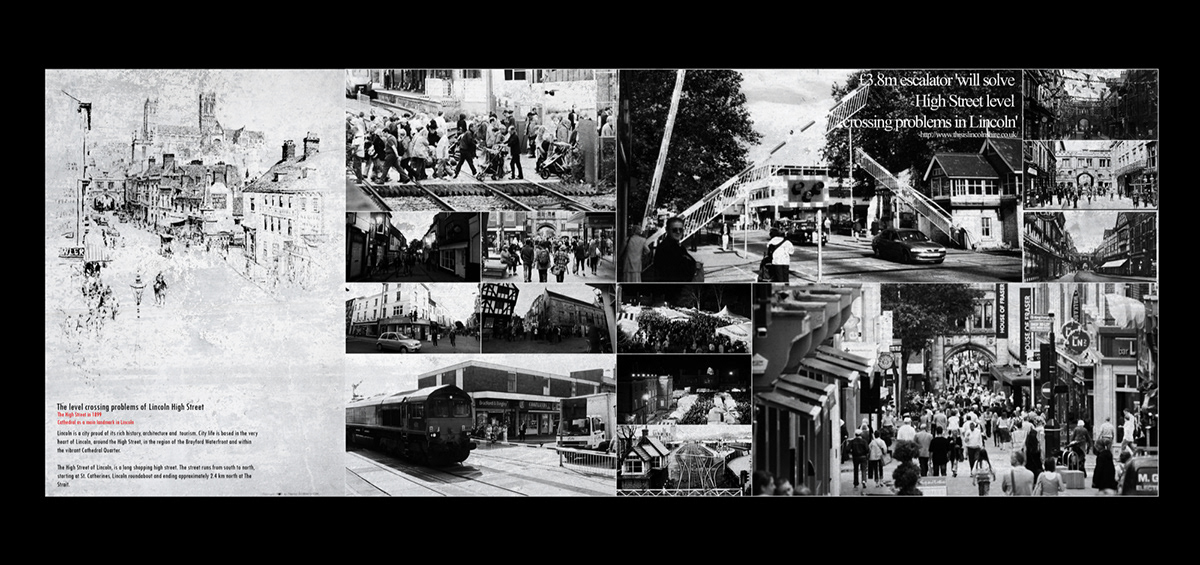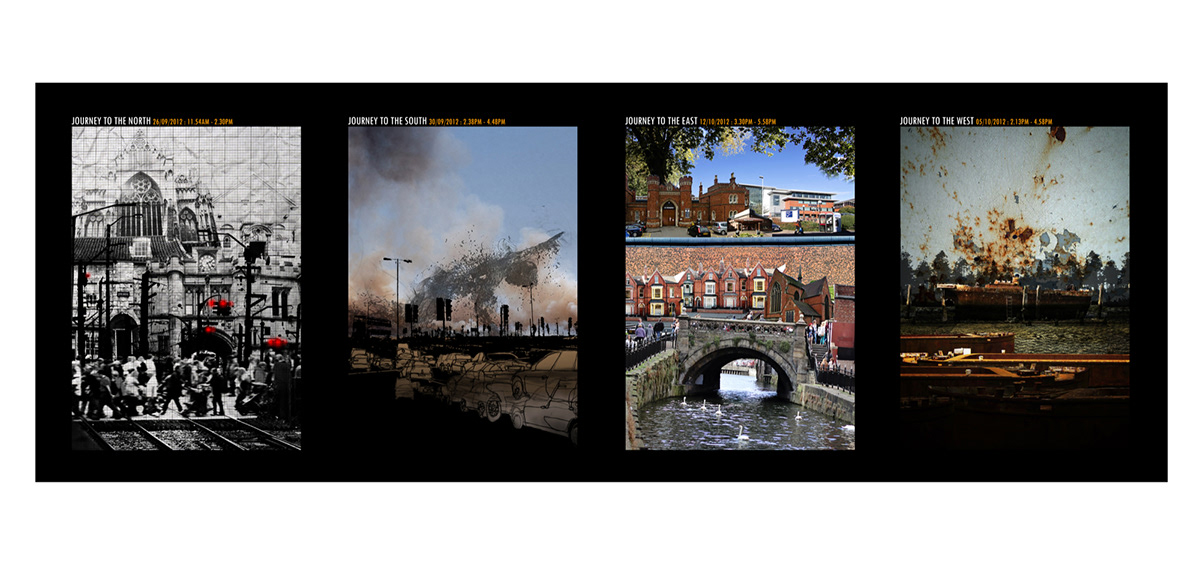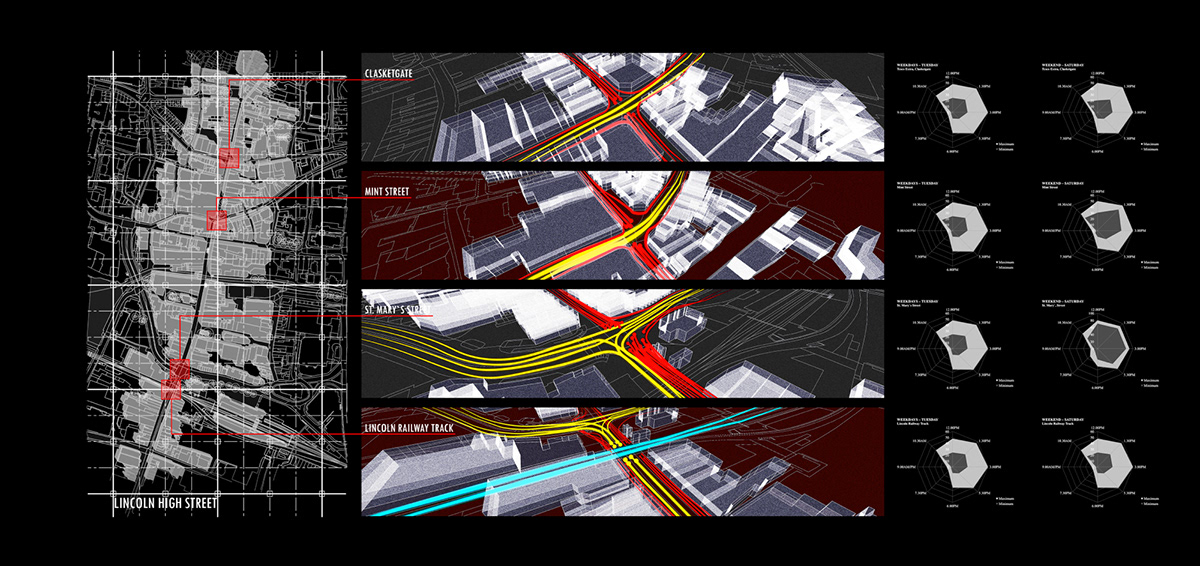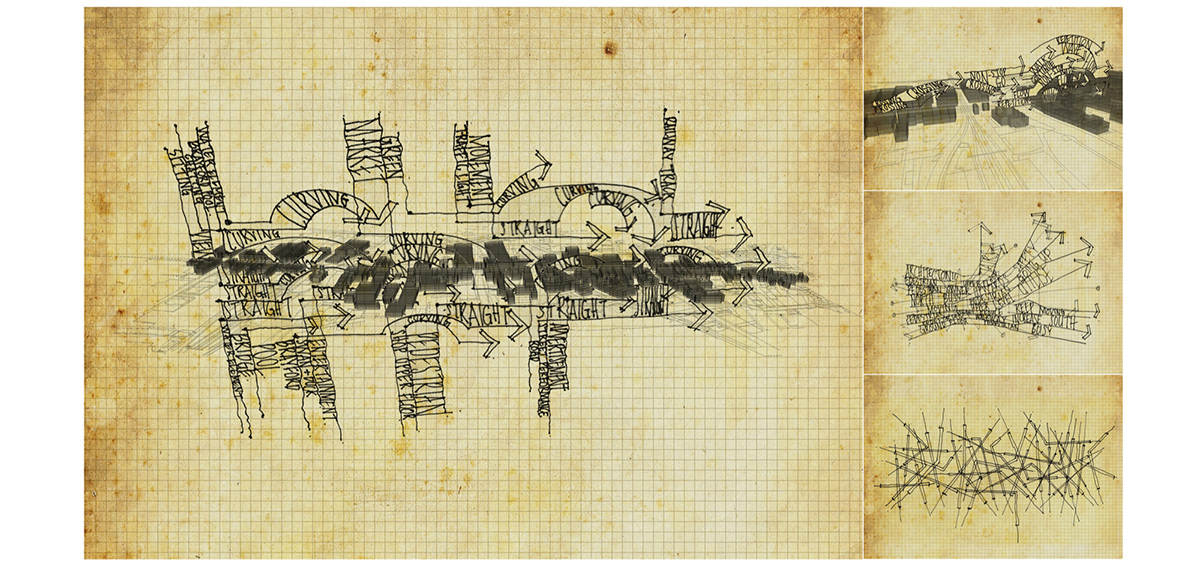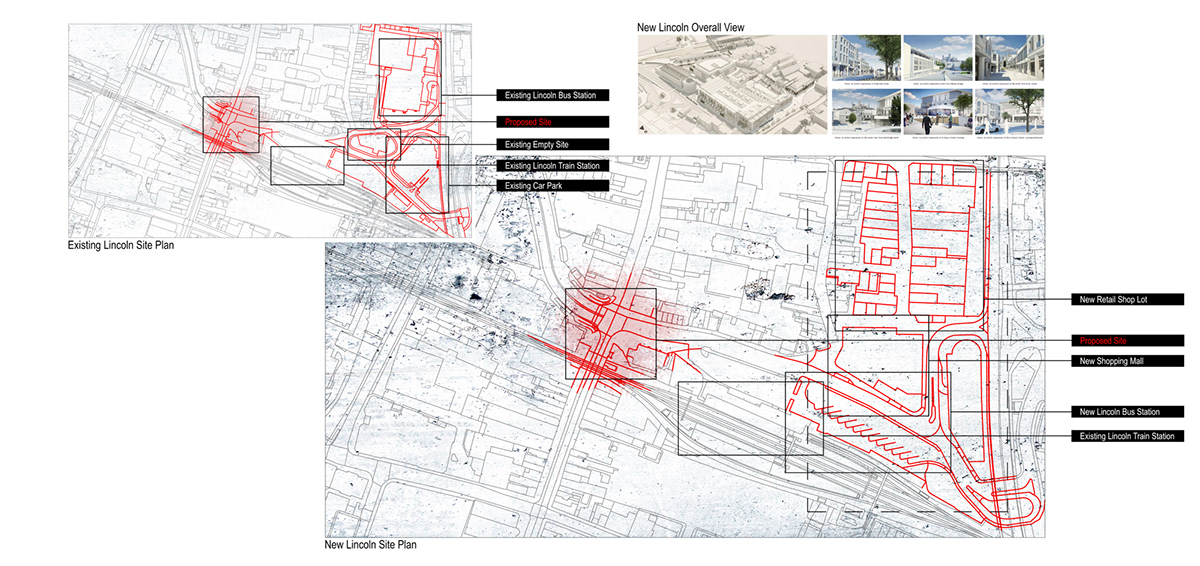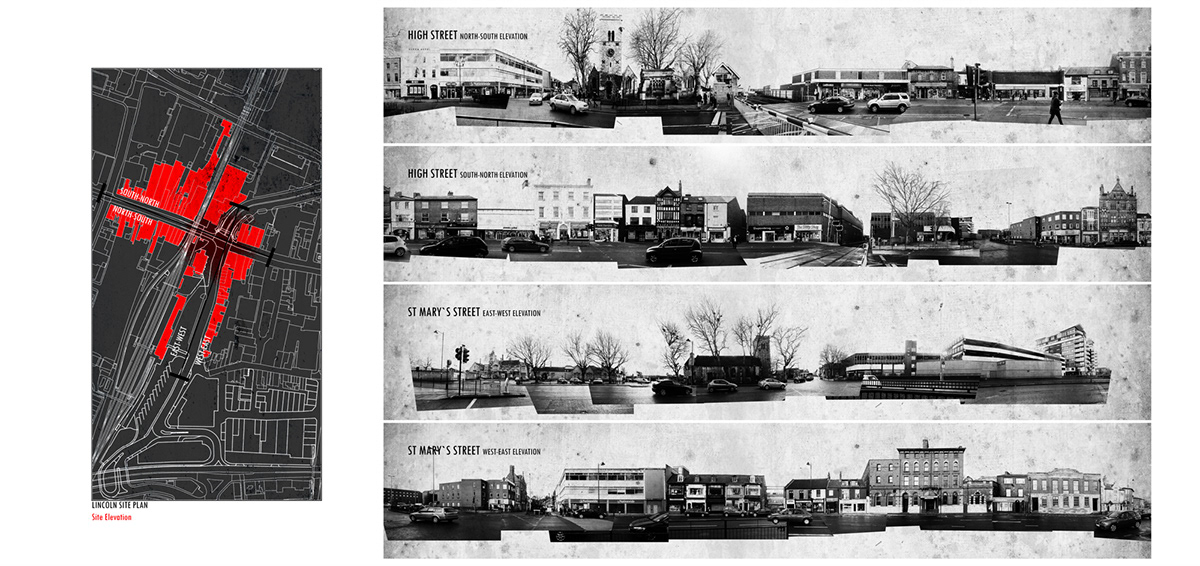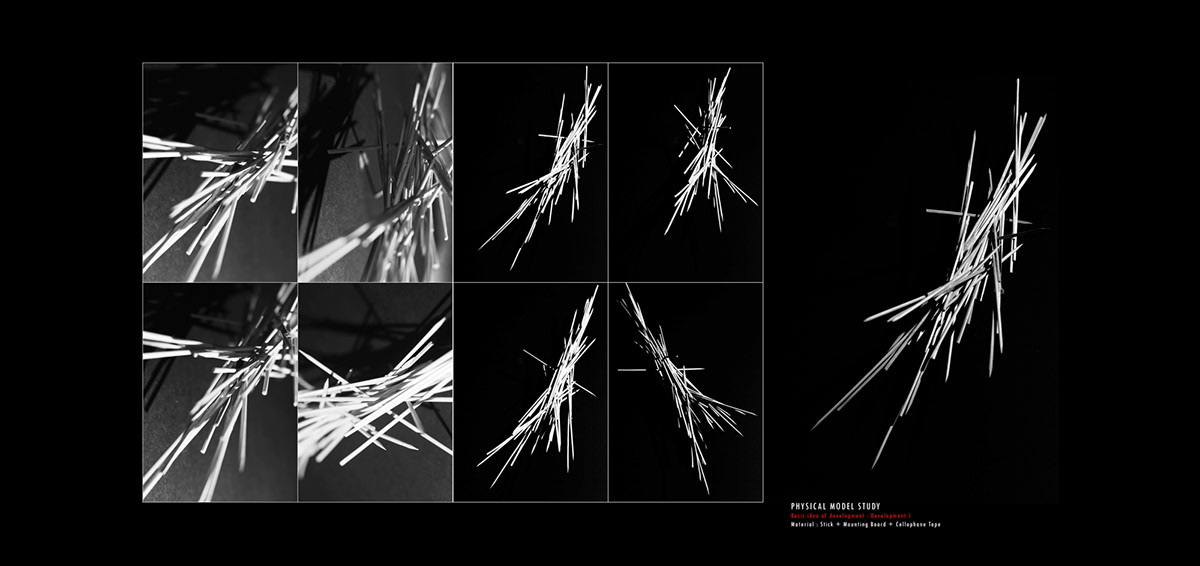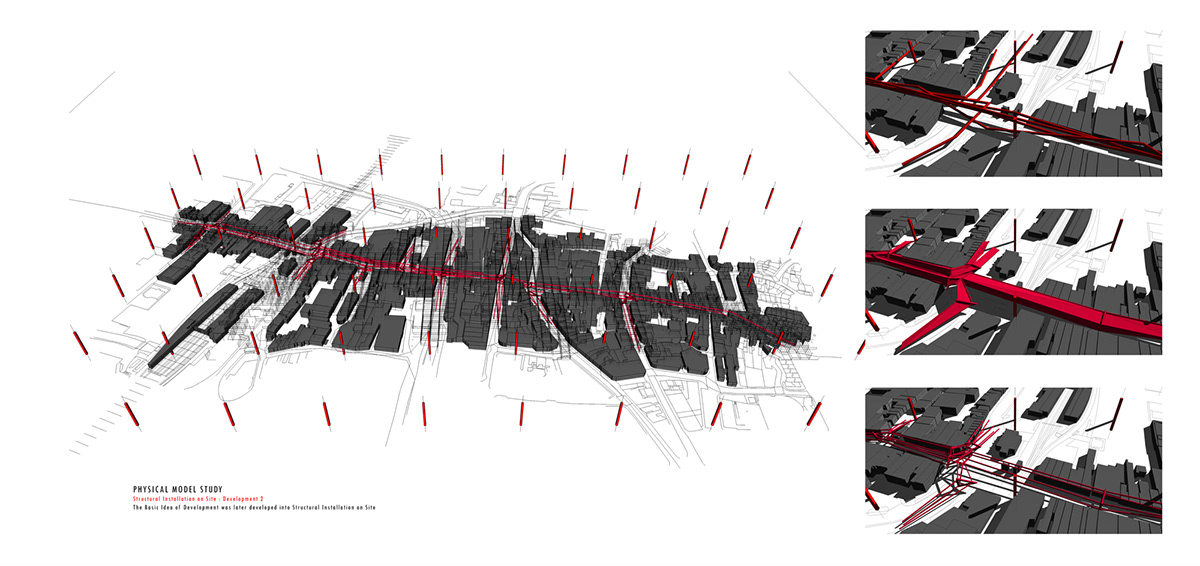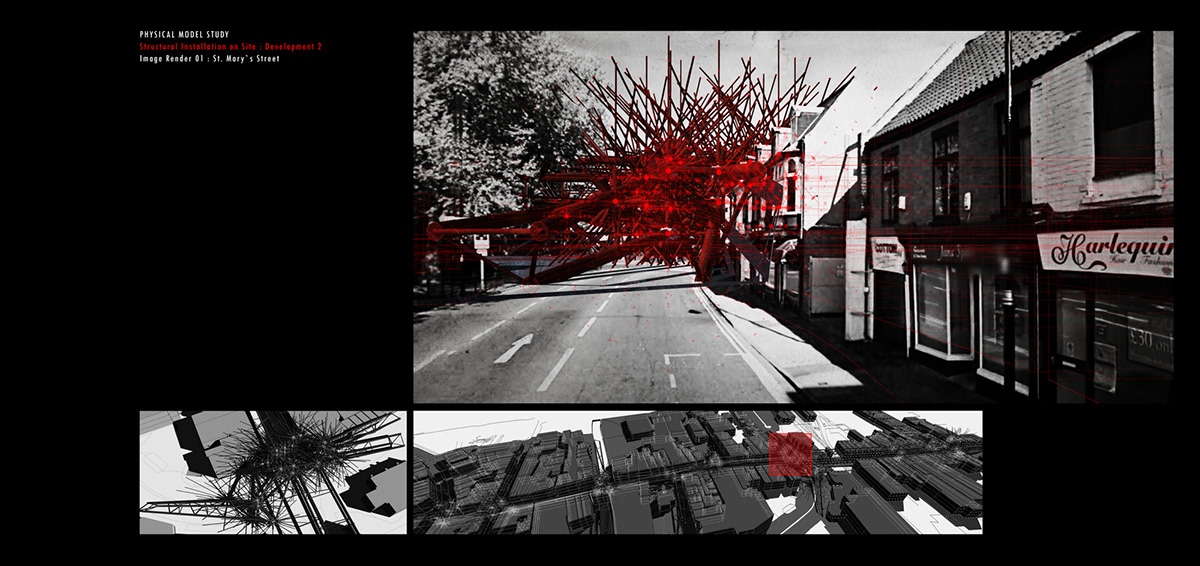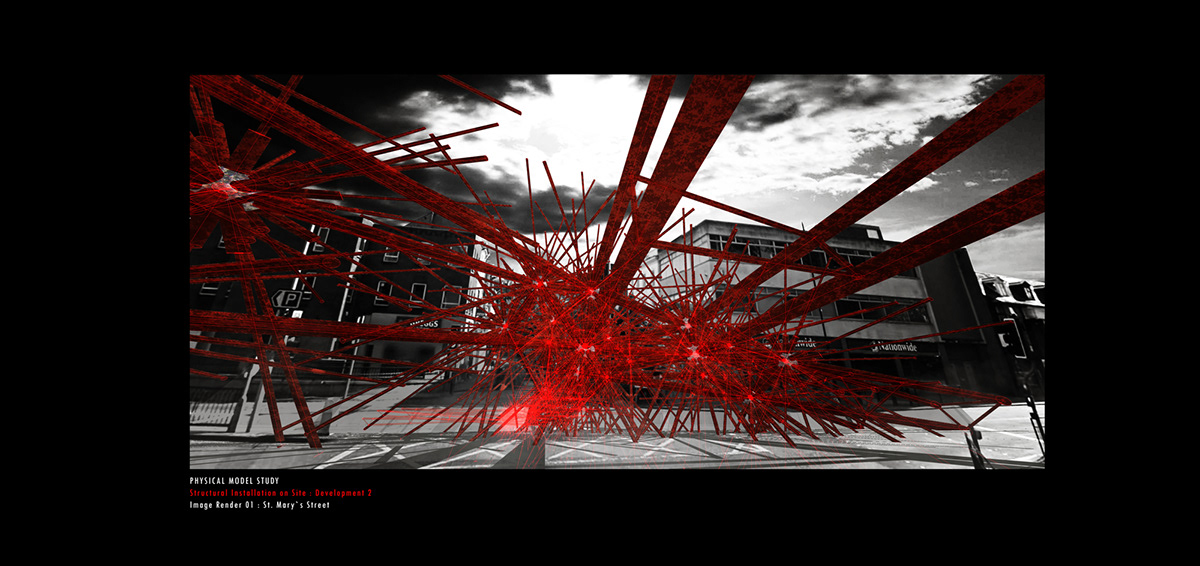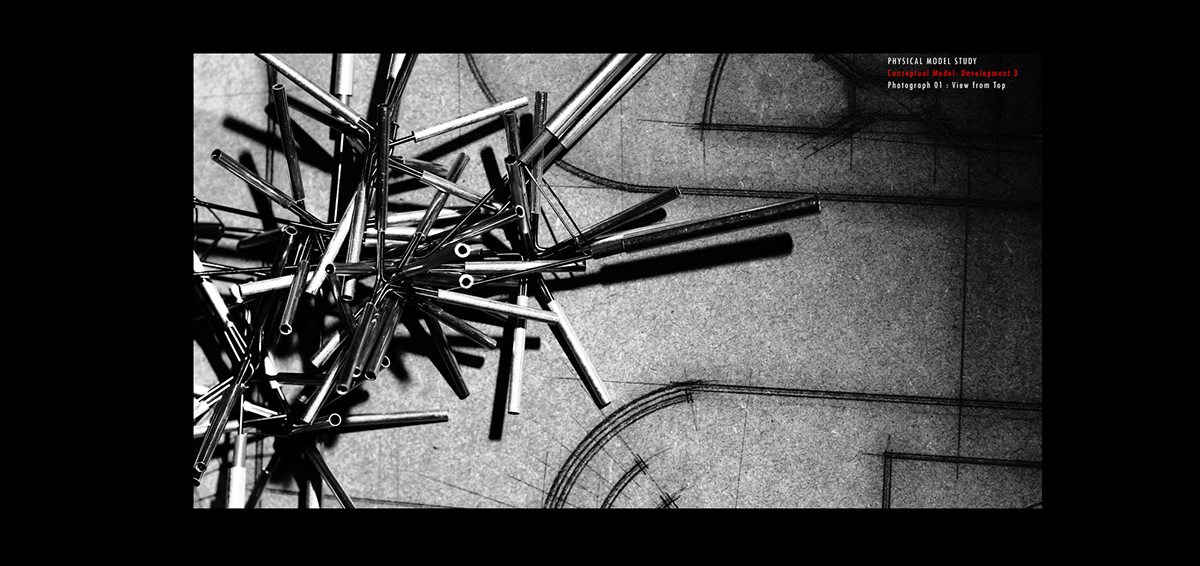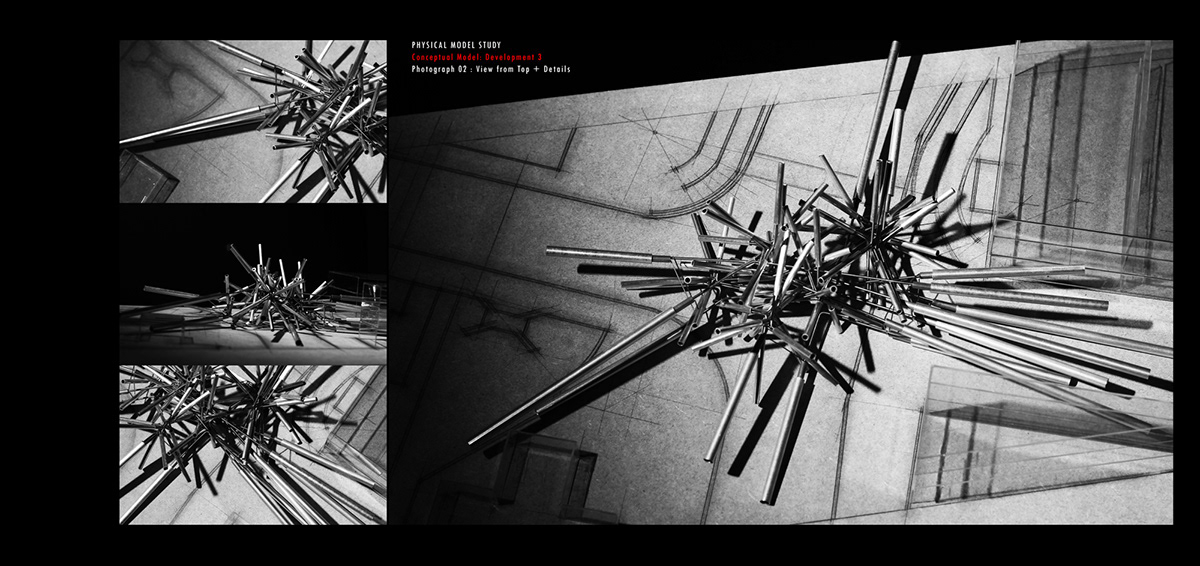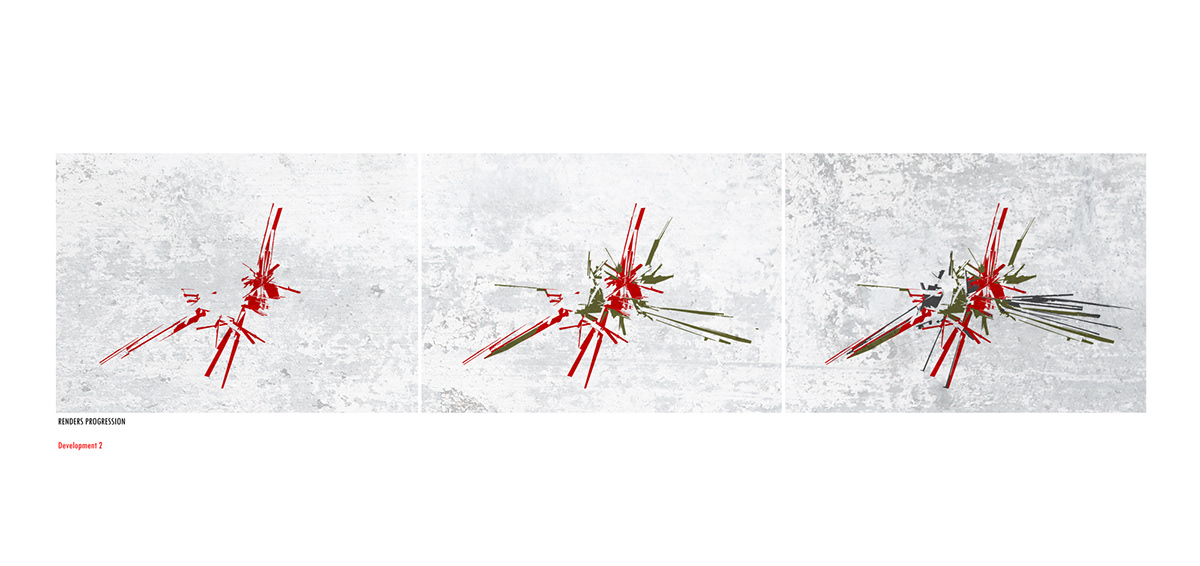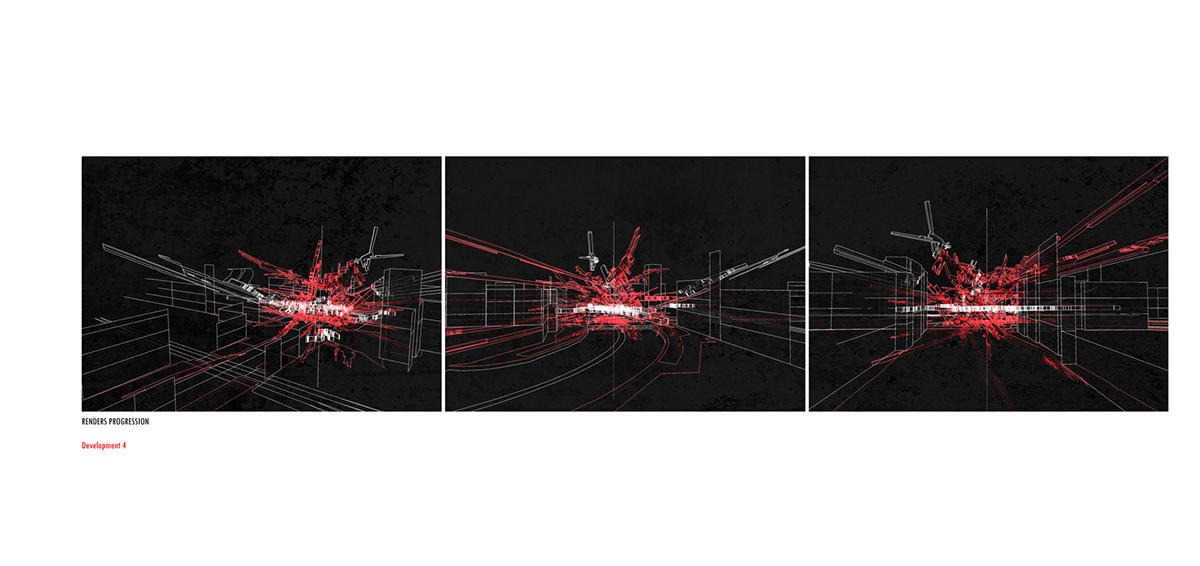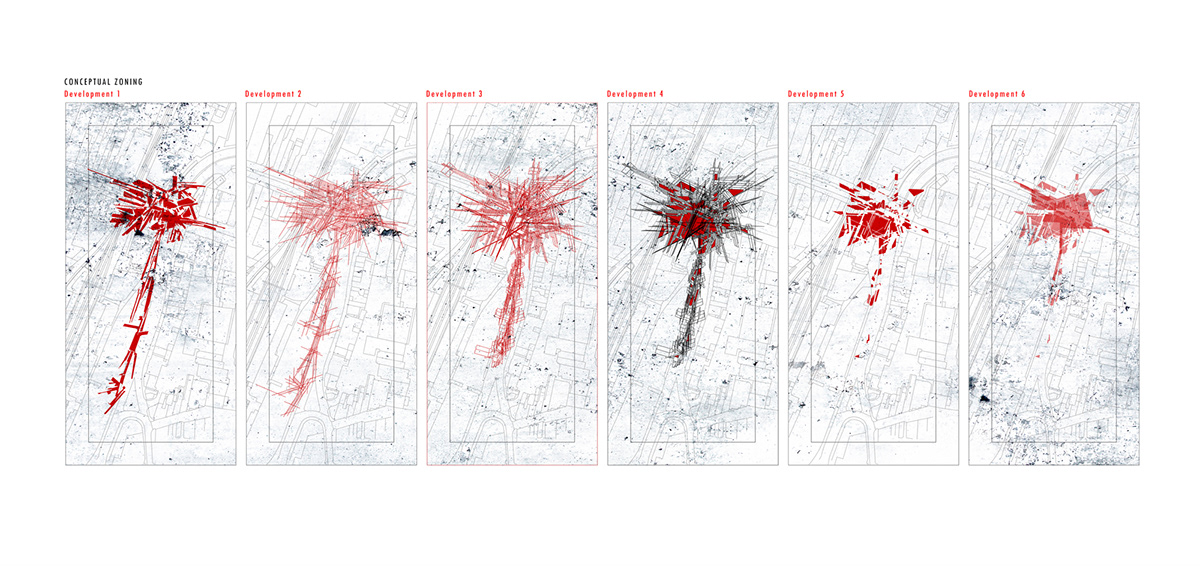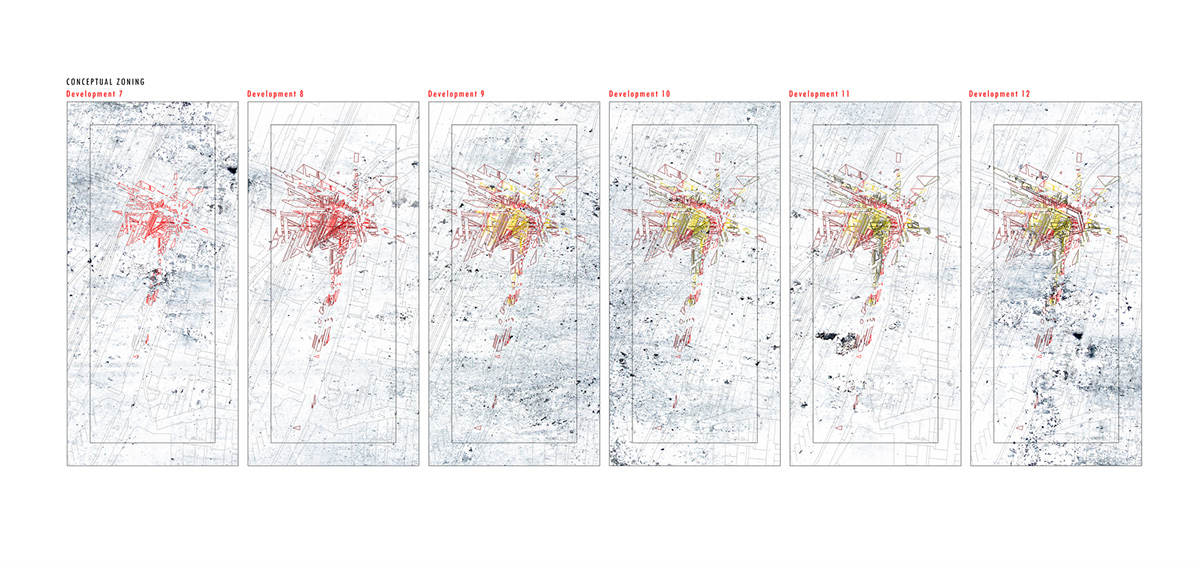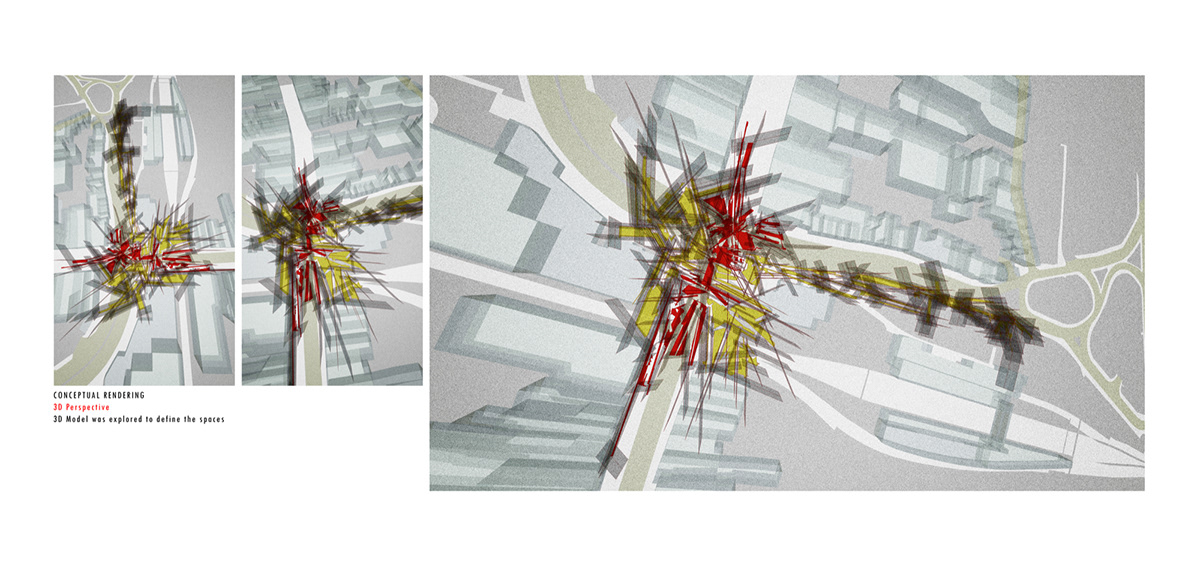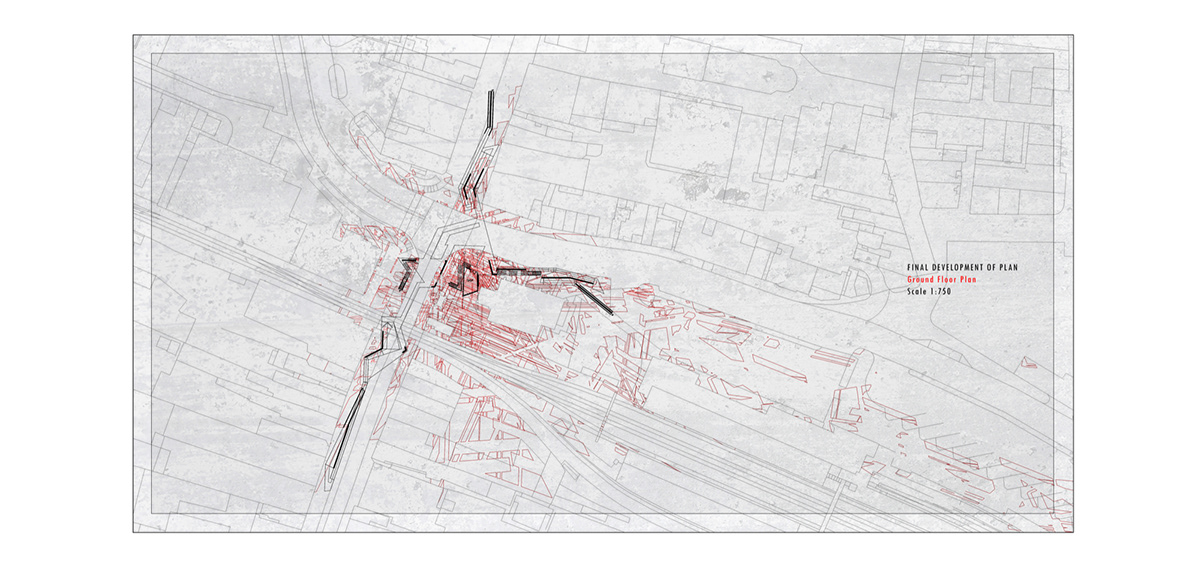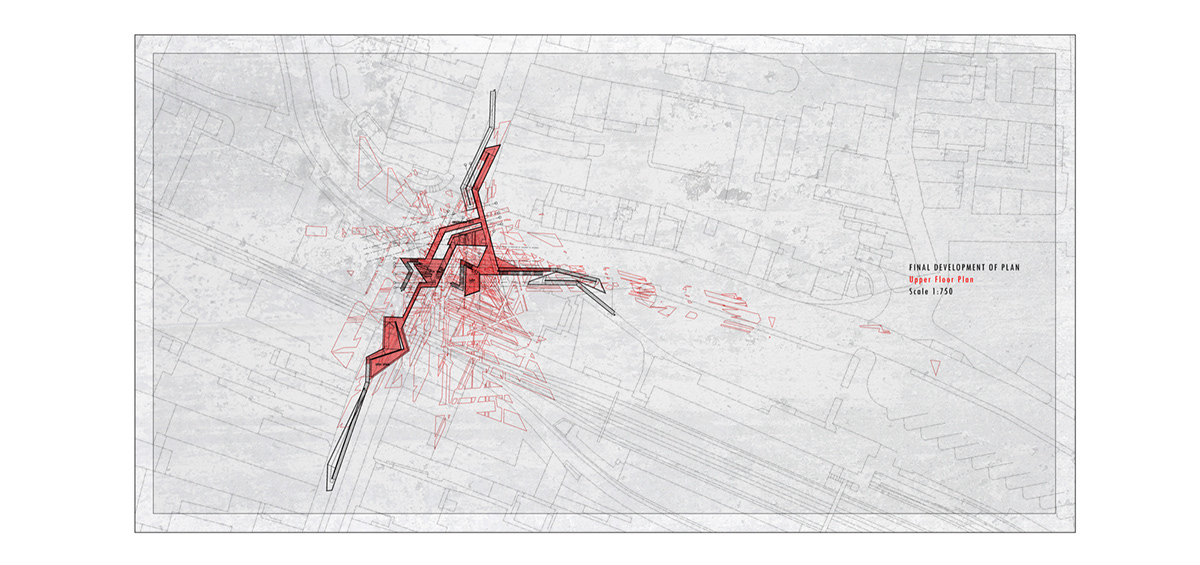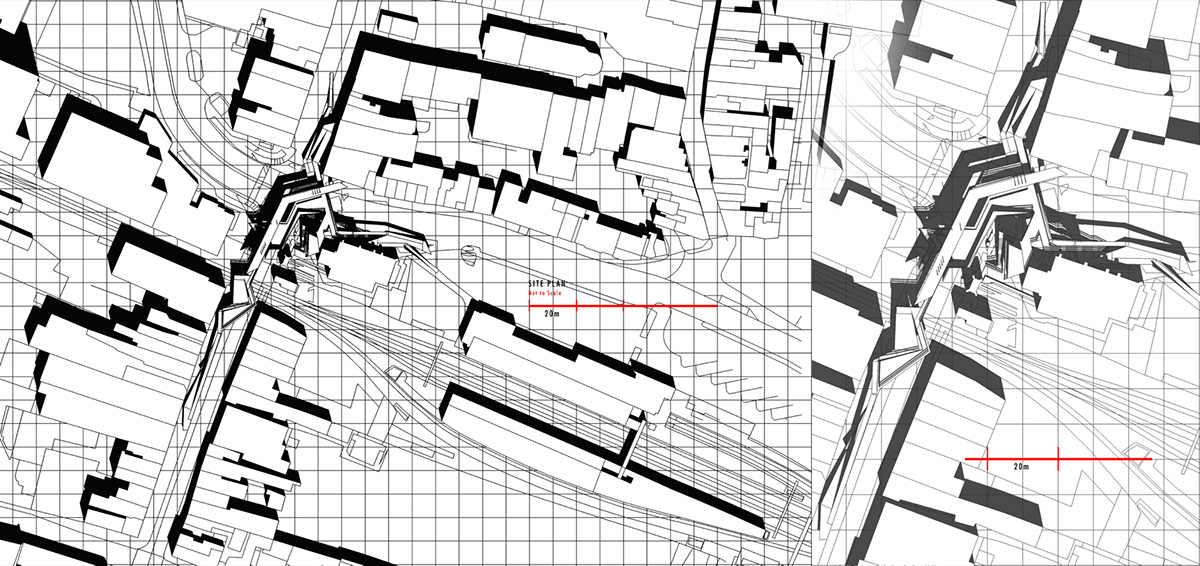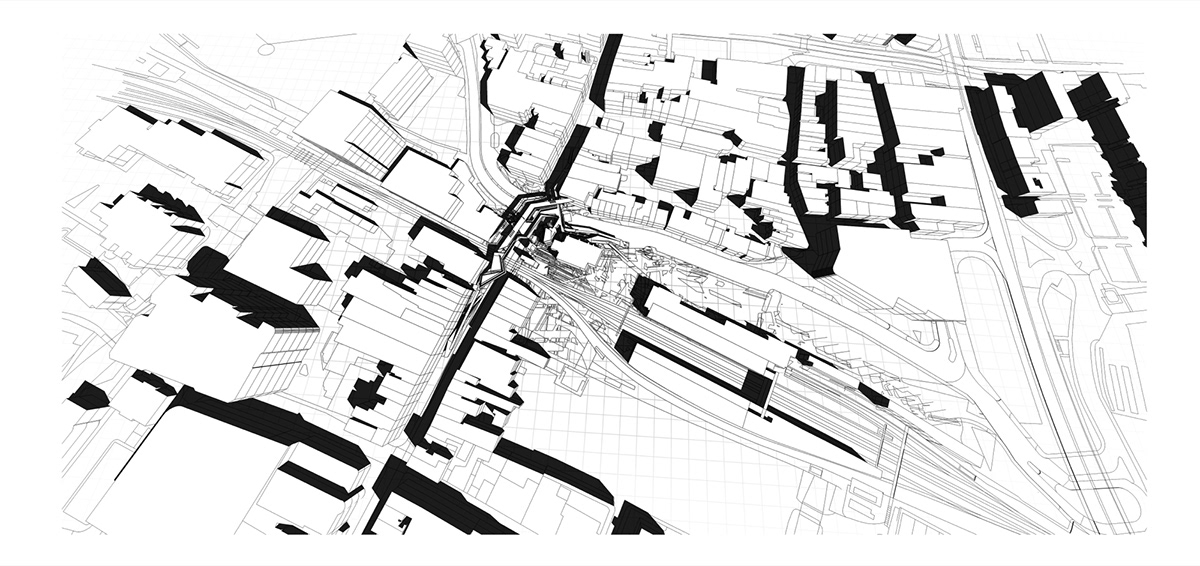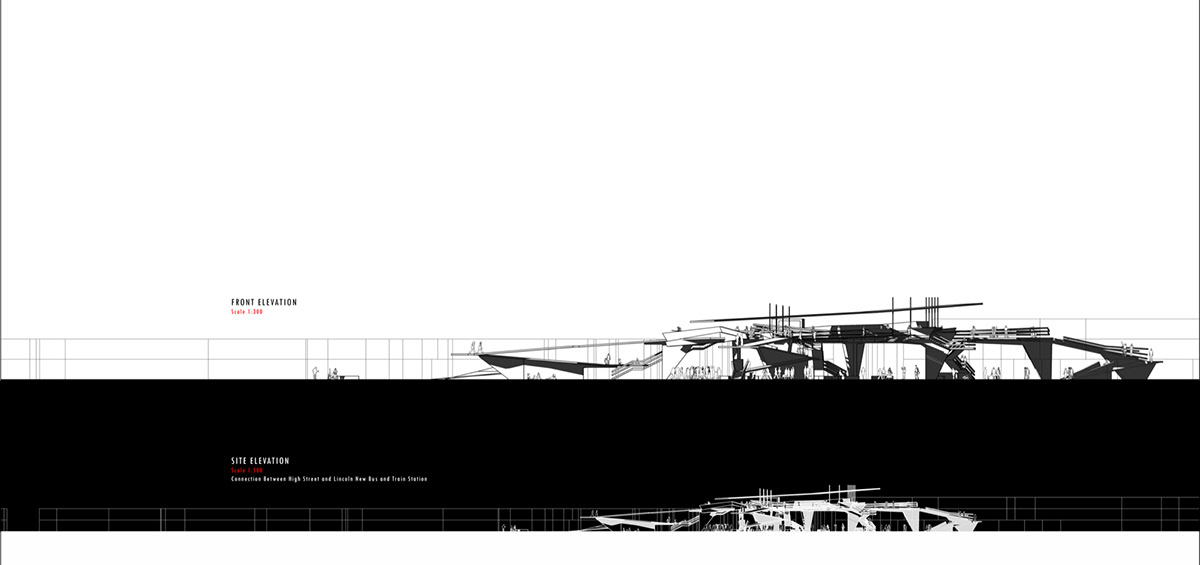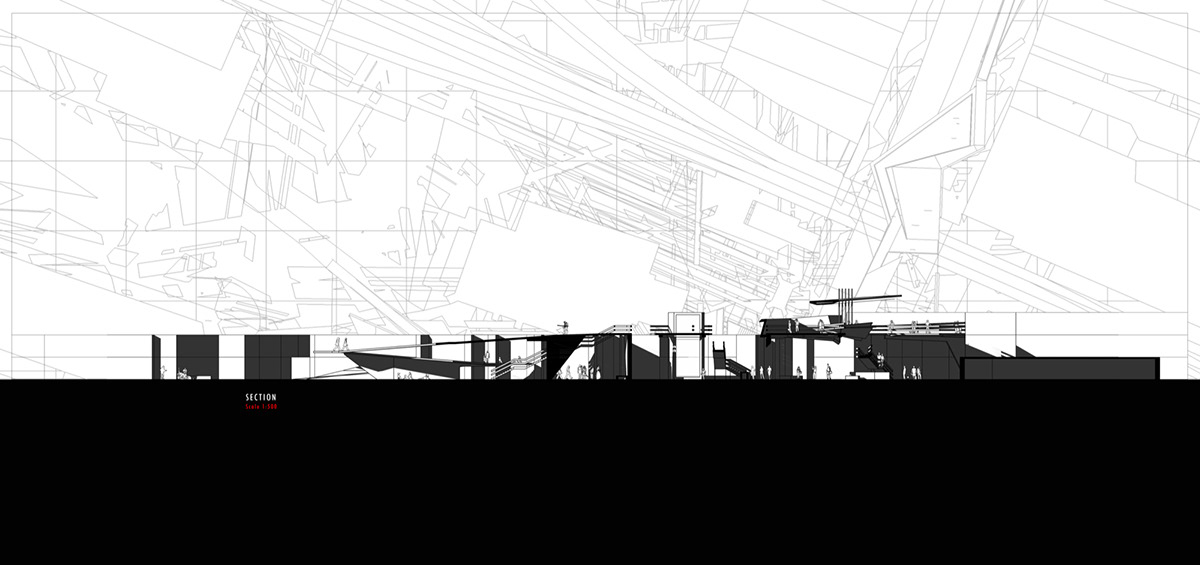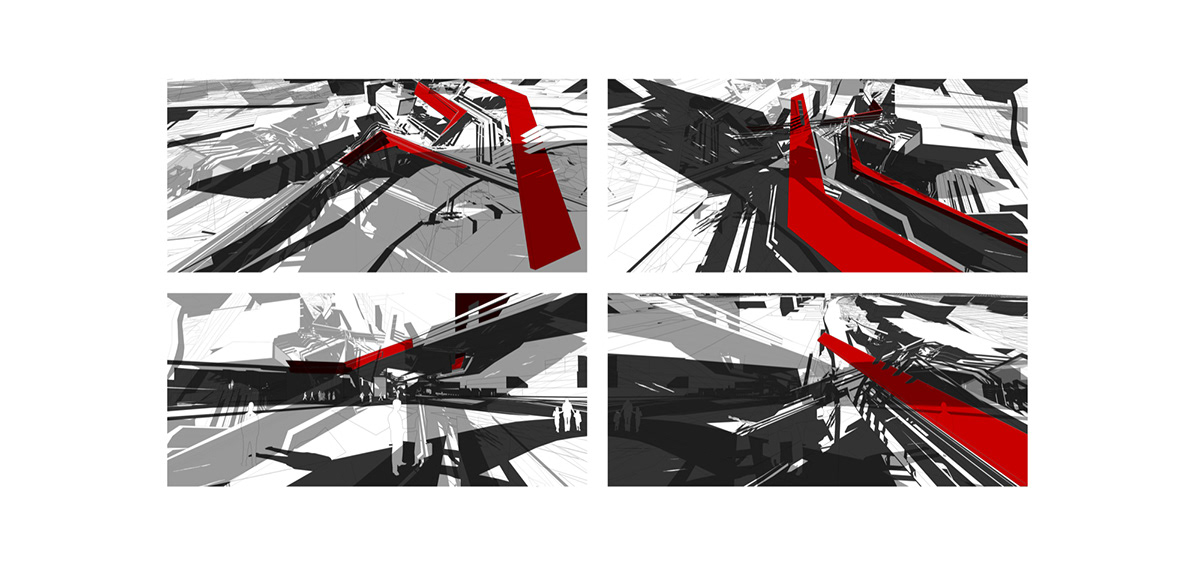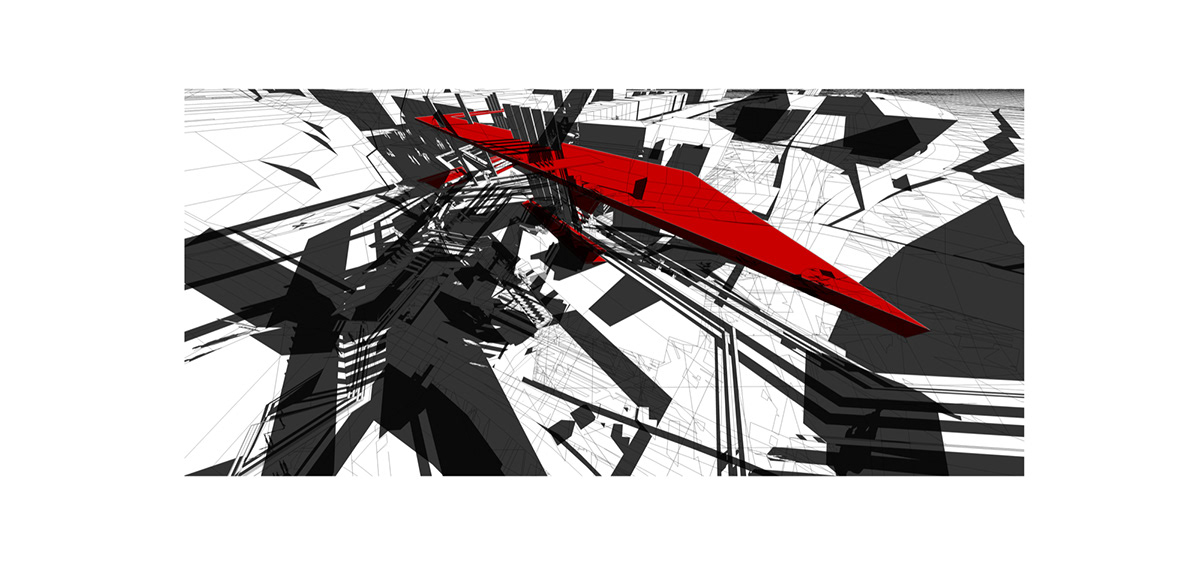LINCOLN CONNECTIVITY PROJECT
My project stems from the observation made on physical movement of people and vehicles. It begins with the exploration of the notion of why people move from one place to another and the physical obstacles faced when moving to a destination. Thus, I examine some junctions at Lincoln High Street, a thoroughfare, which the public is concerned with the high traffic volume recorded during morning and after work. This urban traffic problem poses a threat to public safety. Planners and engineers consider building overhead footbridge as a an alternative solution. However, the solution is found to be simple reducing the bridge to its specific use – public crossing. The study therefore attempts to consider an inhabitable bridge. The inhabitable bridge is in fact a living bridge where one can live, work and play within it.
Several investigations were undertaken to compile data on the number of pedestrians and vehicles crossing at the junction of St Mary Street and other junctions. It was found the peak time was during morning and after working hours whilst less people cross junctions during late morning and noon. The principle objectives of the survey on traffic and pedestrian flows along Lincoln High Street was to determine the need for building an inhabitable bridge as a solution that not only facilitates public crossing and at the same time alleviates the risks of accidents faced by pedestrians especially during peak time. In addition, inhabitable bridge represents an extension of human activities which living, shopping, working and provides a place for relation.
Alternatively, this project attempts to explore the potentials of designing inhabitable bridge as a hybrid bridge which integrates public crossing with other activities such as providing small shops and homes, galleries, exit for underground train station, public toilets and resting place.
Architecture at is best not only confines a bridge to its specific use but also provides flexibility in the use of bridges accommodating several activities within a single bridge. Typically some old bridges used mainly used for public crossing gradually become an obsolete and does not complement with the environment.



